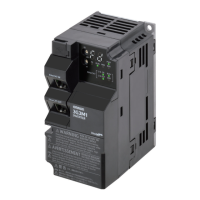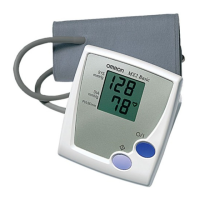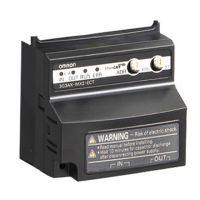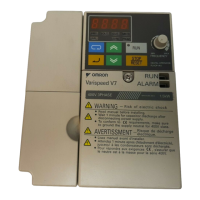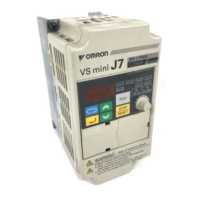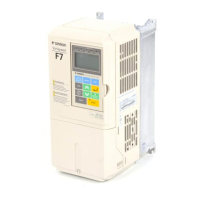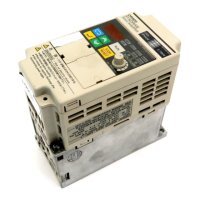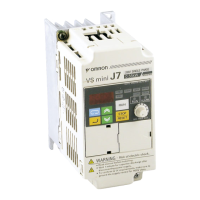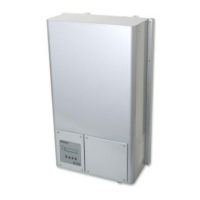The electronic thermal function enables you to change the overload detection characteristics by setting
the 1st/2nd Electronic Thermal Characteristics Selection (b013/b213) according to the motor in use.
The reduced torque characteristics and the constant torque characteristics are achieved by setting the
reduction factor for each output frequency of the inverter in the basic electronic thermal characteristics.
This section first describes the basic electronic thermal characteristics and then explains the reduction
factor for each detection characteristic.
⚫
Basic characteristics
The electronic thermal characteristics of a motor are as shown in the following graph independent of
the heavy load/light load mode setting.
⚫
Reduced torque characteristics
Use the reduced torque characteristics setting for general-purpose (standard) motors.
In an air-cooled motor that uses the rear fan coupled directly to the motor shaft, the cooling effect
degrades as the motor rotation speed decreases.
This characteristics setting enables overload detection that takes into account such degradation of
the cooling effect at low speeds.
Specifically, the following reduction factor is applied to the current value set in the 1st/2nd Electronic
Thermal Level (b012/b212) to calculate a reduced current value, which is equivalent to 100% of the
basic characteristics.
Reduction Factor Characteristics
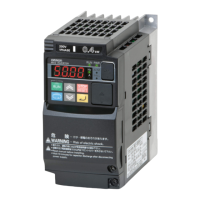
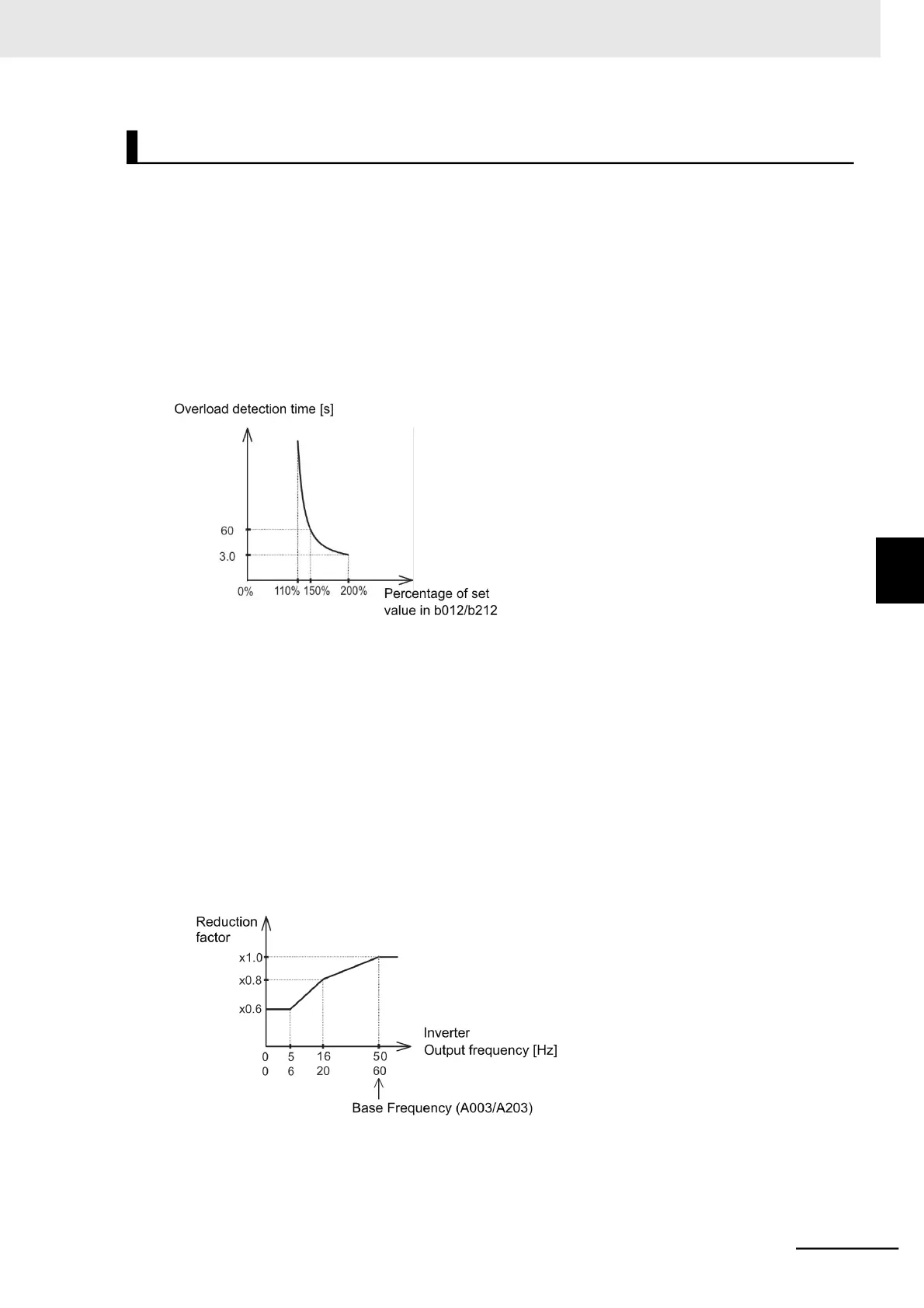